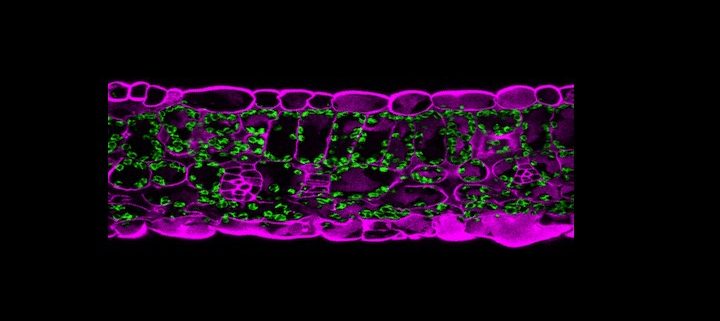An Unconventional Route for Viral Replication Vesicle Trafficking
Garcia Cabanillas et al. show the existence of a tug-of-war for successful plant virus infection. The Plant Cell (2018). https://doi.org/10.1105/tpc.18.00281
By Daniel Garcia Cabanillas, Jun Jiang and Jean-François Laliberté
Background: Plants are susceptible to viruses, which cause severe physiological, morphological and growth defects in the infected host. Viruses remodel the intracellular architecture of the cells they infect. In doing so, they induce the formation of an organelle known as a viral factory. Very often, a viral factory takes the form of a motile membrane-bound vesicle that is approximately 100 nm in diameter. Viral replication takes place within these spherical vesicles. Viral factories are also vehicles for the transport of the viral genome from an infected cell to surrounding non-infected cells. This is how a plant can become systemically infected after entrance of a viral particle within a single cell.
Question: We know that for turnip mosaic virus the viral vesicles originate from the ER, but what is their fate after the vesicles are released from the ER?
Findings: Immediately after being released from the ER, the viral vesicles face two possible transport routes. They can fuse with the Golgi apparatus, but that constitutes a dead-end for infection. Otherwise, they can bypass the Golgi, but the destination and pathway were unknown. After screening several Arabidopsis thaliana mutant lines, we identified one mutant line that was resistant to the virus. The mutation lies in VTI11, a protein involved in the formation of pre-vacuolar compartments, which are an important sorting organelle of the cell. We concluded that there is a tug-of-war between the two transport routes – there is no virus production if the viral vesicles enter the Golgi apparatus, but a full infection takes place if the vesicles bypass the Golgi on their way to pre-vacuolar compartments.
Next steps: Pre-vacuolar compartments are multivesicular bodies, which ultimately fuse with the plasma membrane and release their contents in the extracellular space. We will next investigate whether the plant extracellular space has a role in viral infection.
Daniel Garcia Cabanillas, Jun Jiang, Nooshin Movahed, Hugo Germain, Yasuyuki Yamaji, Huanquan Zheng and Jean-François Laliberté. (2018) Turnip Mosaic Virus Uses the SNARE Protein VTI11 in an Unconventional Route for Replication Vesicle Trafficking. https://doi.org/10.1105/tpc.18.00281




